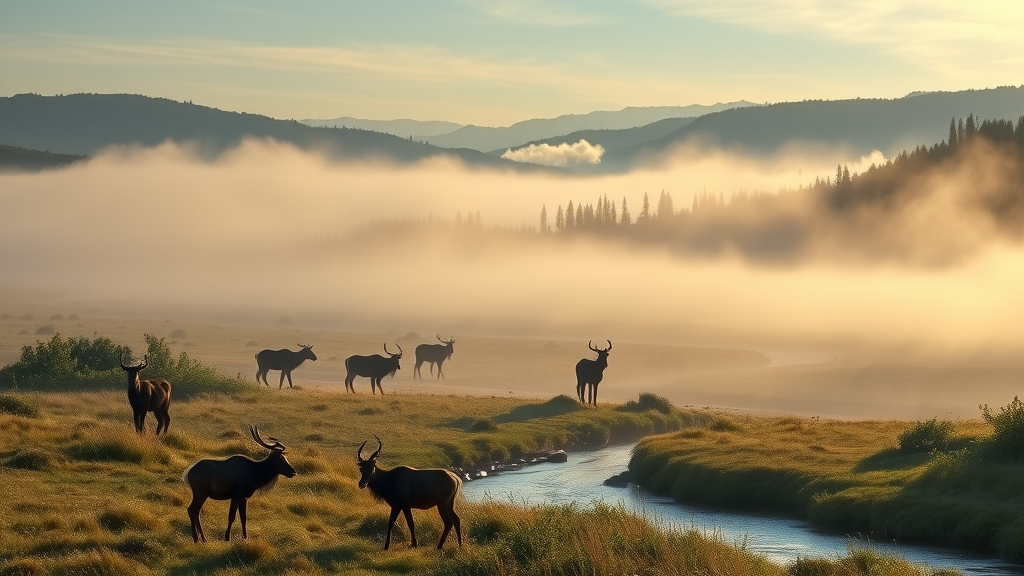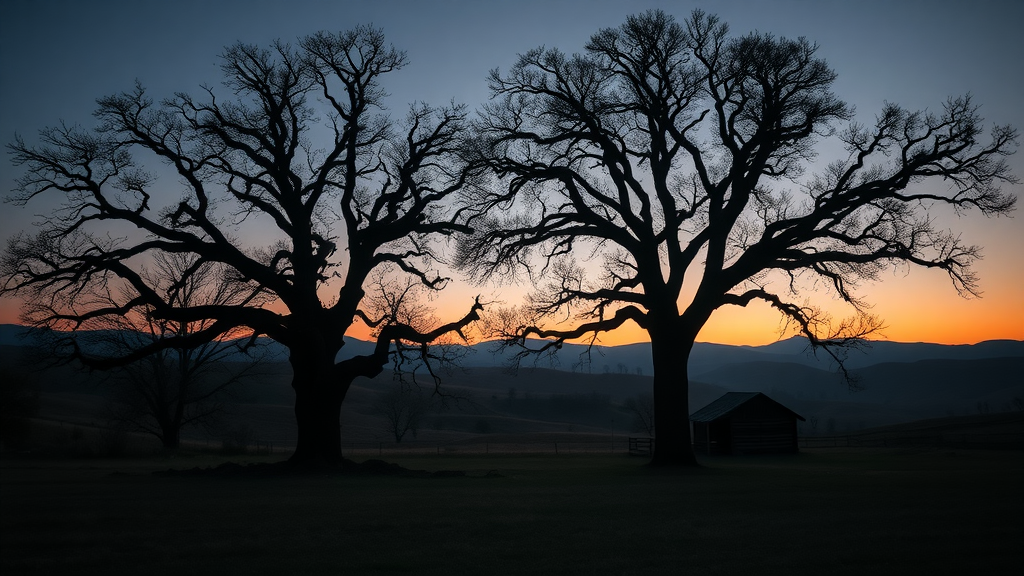Unlocking Nature’s Best Kept Secret: The Power and Purpose of Bitter Creek National Wildlife Refuge
In a world rapidly shaped by urban development and technology, untouched wild landscapes are growing ever rarer. Have you ever wondered what secrets still exist in these vast, protected spaces—places where endangered species cross paths with ancient history, and the rhythm of the natural world moves undisturbed? Tucked into the junction of two majestic California mountain ranges, the Bitter Creek National Wildlife Refuge stands as a living reminder of the ecosystems and wildlife corridors that once dominated much of the American West.
The value of the Bitter Creek National Wildlife Refuge goes far beyond its scenic views. This sanctuary serves as a critical hub for wildlife research, particularly the renowned California Condor Recovery Program. Its land safeguards essential habitats and movement corridors not just for iconic condors, but for a tapestry of creatures—native ungulates, raptors, lesser-known flora and fauna, and even remnants of human history dating back to Native American cultures and the dawn of American homesteading. For those eager to understand how such quiet corners of the world shape our future—as well as theirs—Bitter Creek offers a story rich with discovery, resilience, and hope.

Why Bitter Creek’s Ecosystem Matters: Defining Its Role in Wildlife Conservation
The Bitter Creek National Wildlife Refuge is more than a preserve; it is a vibrant, functioning ecosystem that forms an irreplaceable link in California’s web of natural corridors. As a keystone crossing where two mountain ranges meet, the refuge enables essential movement for species like the California condor—a bird once on the brink of extinction and now slowly reclaiming the skies through coordinated conservation efforts. But the story doesn’t stop there. This land is equally crucial for native ungulates, birds of prey, and uncommon plant species, each relying on the refuge's intact habitat for shelter, migration, and survival.
For those unfamiliar with concepts like wildlife corridors and conservation initiatives, the consequences of inaction are profound. When habitats become fragmented, creatures struggle to move, breed, or locate scarce food sources—challenges that can lead to population decline, genetic bottlenecks, or even extinction. Bitter Creek’s role, therefore, is pivotal in countering these threats. The refuge not only preserves the continuity of natural pathways, but it also exemplifies a community-driven model of stewardship, where public and private partnerships ensure the survival of species well beyond its boundaries. For anyone concerned about the balance between progress and preservation, the lessons here are both urgent and inspiring.

How Bitter Creek Serves as a Lifeline for California’s Iconic and Rare Wildlife
As a recognized hub for the California Condor Recovery Program, Bitter Creek National Wildlife Refuge operates as a vital sanctuary within a much larger conservation effort. The refuge’s unique topography—where mountains funnel migratory wildlife—protects coveted habitat and maintains the integrity of critical movement corridors. These corridors are not just for the headline-grabbing condors, but also for populations of native ungulates and a diverse range of raptors and other animals. The security and space provided foster thriving populations, bolstering the resilience of wildlife locally and supporting reintroduction efforts regionally.
The broader significance of Bitter Creek extends to lesser-known native species and plants, whose survival often hinges on the quality and continuity of untouched ecosystems. The land is home to complex ecological relationships, where every plant or animal plays a part in sustaining the whole. By preserving this sanctuary, conservation efforts remove obstacles to survival, encourage natural behaviors, and lay groundwork for long-term biodiversity—a benefit not just to wildlife, but also to future generations who hope to experience California’s wild heritage.
Bridging the Past and Preserving Cultural Heritage: Bitter Creek’s Story Runs Deep
Beyond its ecological wonders, Bitter Creek National Wildlife Refuge encapsulates both natural and human history. Native American cultural resources are carefully protected here, offering a window into the early inhabitants’ relationship with these landscapes. Scattered remnants of 19th-century homesteads also dot the refuge—a quiet testament to those who once tried to carve a life from the land. This interplay between the wild and the historic enriches every acre of Bitter Creek, underscoring the interconnectedness of people and place throughout time.

By safeguarding these resources, the refuge not only honors its natural inhabitants but also the legacies of humans past. Each layer adds complexity and meaning, reminding those who learn about the refuge that conservation is as much about memory and cultural continuity as it is about science and species protection.
An Unseen Sanctuary: Viewing Bitter Creek and Supporting Conservation Efforts
While the refuge is not open to regular public visits, large portions can be observed from Hudson Ranch Road, an important vantage point for wildlife enthusiasts and conservation supporters alike. The partial closure helps mitigate human disturbance to sensitive species and habitats, demonstrating a commitment to prioritizing ecosystems over recreation when necessary. However, access is possible through guided tours and volunteer opportunities, offering educational engagement and a way for dedicated individuals to contribute meaningfully to ongoing projects.
Ongoing partnerships with public and private landowners further the refuge’s reach, allowing the benefits of Bitter Creek to transcend its boundaries. Whether through research, volunteerism, guided education, or responsible wildlife viewing, each avenue strengthens the collective impact on regional and national conservation ambitions.
The Forward Edge of Science: Bitter Creek’s Leadership in the California Condor Recovery Initiative
The philosophy at the core of Bitter Creek National Wildlife Refuge emphasizes robust, science-driven conservation and the collaboration required to accomplish it. As a keystone in the greater California Condor Recovery Program, the refuge demonstrates what’s achievable when agencies, educators, and community members unite to safeguard irreplaceable species and habitats. The staff and partners leverage their expertise not only to protect individual animals but also to enhance entire ecosystems—creating a ripple effect that benefits numerous plants and animals.

Passion for education is another defining principle. Programs like CondorKids broaden outreach and awareness, nurturing the next generation of conservationists and decision-makers. The hands-on research and educational initiatives rooted at Bitter Creek model what’s possible in wildlife management: innovation balanced with humility, and stewardship guided by both data and respect for the past. Combined, these values position the refuge at the forefront of a movement to sustain biodiversity and inspire long-term care for California’s wild places.
What Visitors Notice First: Real Stories from the Bitter Creek Experience
The magic of Bitter Creek National Wildlife Refuge is often best captured through those who have witnessed its beauty firsthand—sometimes from the seat of a car, sometimes beneath a canopy of stars. Visitor feedback reveals an environment that leaves a mark, inviting reflection and genuine connection with the land. Consider this review, emblematic of the unique experiences gained from immersion in such a rare, well-preserved landscape:
Beautiful Ride with my best buddy Bob Moss California hills and mountains
The awe inspired by Bitter Creek’s open hills and mountain scenery is shared by many who travel California’s interior, whether they come seeking wildlife, tranquility, or a day spent exploring the edge of wilderness. Such testimonials affirm that even casual encounters with this sanctuary leave visitors with a sense of wonder and a deeper appreciation for the natural world—a reward available to anyone who seeks out these hidden refuges and supports their continued protection.
The Last Refuge: How Bitter Creek Shapes California’s Conservation Future
Bitter Creek National Wildlife Refuge stands as a living model of what’s possible in modern conservation. Its essential role as a connector for wildlife corridors, haven for rare species, and preserver of cultural memory highlights the value of protecting keystone habitats in an increasingly fragmented world. Through an innovative blend of habitat management, collaboration, and public engagement, the refuge continues to support the recovery of the California condor and numerous other species—redefining what it means to steward our planet’s dwindling wild places.
As development pressures mount, understanding and contributing to the work done at places like Bitter Creek become ever more important. By sharing its lessons and models of success, the refuge not only protects today’s biodiversity but also lights the way for future generations eager to participate in California’s wild legacy.
Contact the Experts at Bitter Creek National Wildlife Refuge
If you’d like to learn more about how Bitter Creek National Wildlife Refuge could benefit your conservation education or support California condor recovery, contact the team at Bitter Creek National Wildlife Refuge.
📍 Address: California 166 & Cerro Noroeste Rd, Maricopa, CA 93252, USA
📞 Phone: +1 805-644-5185
🌐 Website: http://www.fws.gov/refuge/bitter_creek/
Bitter Creek National Wildlife Refuge Location and Availability
🕒 Hours of Operation:
Contact the refuge for details regarding tours, guided access, and volunteer opportunities.

 Add Row
Add Row  Add
Add 





Write A Comment